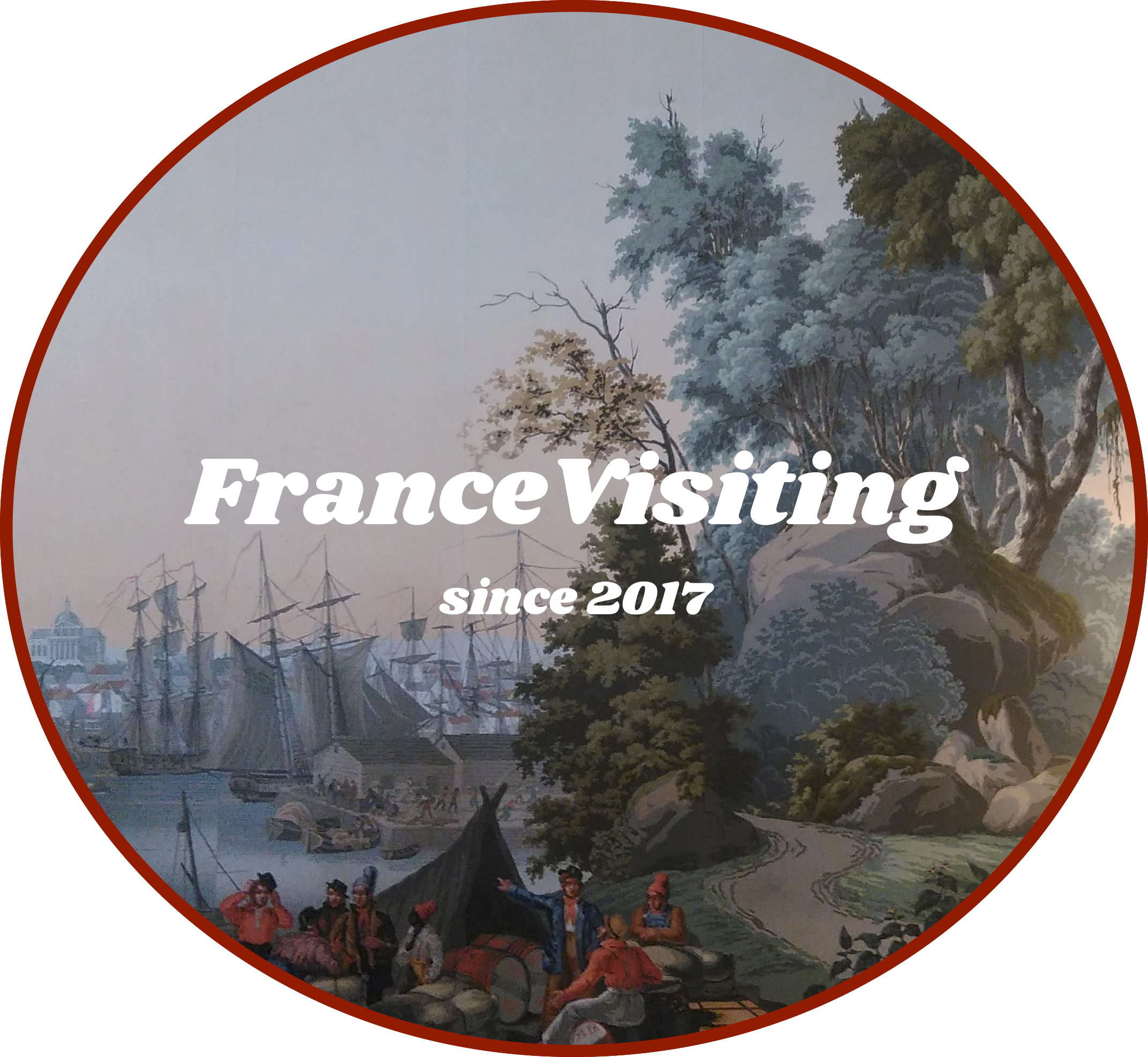Through the garden of concrete towers, visit the nature of Monaco, from top to bottom

At the deep end of the French Riviera and right before the Italian border, the Principality of Monaco is famous for its Formula 1 Grand Prix between the concrete skyscrapers, the Marina with its billionaire yachts and its Casino standing on the priceless parking in the World, made of luxury cars proudly cutting in the middle of the tourists. Founded in 1906 by Prince Albert Ist, the Oceanographic Institute is a recognized foundation of public utility, ensuring the link between the action Principality’s policy for the oceans, the scientific community, socio-economic actors and the general public.It is a building built on the Rock on 9 levels, after 11 years of work, in neoclassical style and inaugurated in 1908, including reminders to Roman villas. The Institute relies on its two institutions what are the Oceanographic Museum of Monaco and the House of Oceans in Paris.




Monaco owes a lot to its explorer Prince, Albert 1st. A fine navigator doubled by a builder, especially for initiating the construction of the Notre-Dame-Immaculée Cathedral (below), the Lycée Louis Albert Ist located opposite the Oceanographic Museum, as well as the Anthropological Museum. This Byzantine-Romanesque Cathedral, built in 1875 with white stones from La Turbie, houses the burialsof the deceased princes. Inside, beside a magnificent high altar and the episcopal throne made of white Carrara marble, there is an altarpiece by the painter Louis Bréa from Nice dating from the year 1500. Monaco Cathedral has two organs: The Grandes Orgues placed on the platform above the narthex, made by Jean-Loup Boisseau in 1976, in collaboration with Pierre Cochereau and Canon Henri Carol. For its realization were used the most noble materials: Vosges fir for the bellows, maple for the console, oak for the facade. Thin Plexiglas plates in the facade may be illuminated in different ways to visually interpret the sound color of the instrument. The choir organ was made by the Tamburini manufacture, in Crema Italy, in 1976.

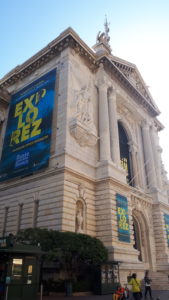


Since its inauguration on March 29th, 1910, the Oceanographic Museum of Monaco, surrounded by a generous hanging garden with lush Mediterranean nature, stands out as a reference at an international level. Peaking at 85 meters above the waves, it offers a dazzling dive to discover more than 6,000 marine specimens and presents itself as a place of exchange and culture, where experiences are confronted about the protection of the oceans, a common heritage of Humanity. From aquariums to historical collections, passing by the Shark Lagoon and the Turtle Island, also admiring the Monte-Carlo bay, from the terrace panoramic view, this real Temple of the Sea offers the unique opportunity to learn know, love and protect the oceans (photo credits: Alex Plato).





 As seen before, the development was made with the help of the Prince Albert Ist, the one that was nicknamed the “Prince of the Seas”, due to his 28 oceanographic campaigns studies from 1885 to 1915, from Cape Verde to the Arctic.
As seen before, the development was made with the help of the Prince Albert Ist, the one that was nicknamed the “Prince of the Seas”, due to his 28 oceanographic campaigns studies from 1885 to 1915, from Cape Verde to the Arctic.
This ocean tradition continued with Prince Rainier III, lover and defender of the Mediterranean Sea, whose action was combined with the assistance of the Commander Jacques-Yves Cousteau.
At the beginning of the 21st century, a commitment was launched in Monaco, through the action of the Grimaldi dynasty, in terms of contemporary issues regarding ocean conservation.
As you could observe, the effigy of the Prince, as a sculpture, is omnipresent, both inside and outside the museum. A way to stay anchored in the memory of sailors.



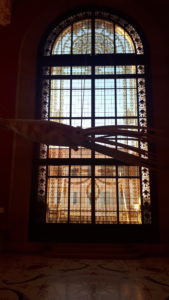
The museum contains also the largest Cabinet of Curiosities in the marine sphere, still extracted from the 28 oceanographic campaigns of the Prince Albert Ist, around the world for scientific purposes. Initiated by Mark Dion, in a surface area of 180 m2, 18 meters wide and 10 meters high! This space harmoniously gathers part of the archives collections in the whole part of the first floor wall.
Inside the exhibition windows and century-old library furniture, are highlighted skeletons and fossils rub shoulders with models, scuba and precious books, according to a sense of proper reading. Nature is represented on the left, the culture and the intervention of the man about this same nature appears on the right.





 Then a scenic boat of 27 meters long, on which the visitors could climb on the deck and discover more than 100 years of history and invite to a trip back in time alongside the Monegasque sovereigns engaged in the Ocean exploration and protection, such as Albert I, Rainier III and S.A.S. Prince Albert II.
Then a scenic boat of 27 meters long, on which the visitors could climb on the deck and discover more than 100 years of history and invite to a trip back in time alongside the Monegasque sovereigns engaged in the Ocean exploration and protection, such as Albert I, Rainier III and S.A.S. Prince Albert II.
The first floor of the Temple of the Sea on 700m2 dedicated to commitment Princes of Monaco forthe protection of the marine world.
Inside is an immersive tunnel with shipping extracts from Commander Cousteau, former director of the Museum.
This is considered to be a new experience, that the few 650,000 annual visitors of the Oceanographic Museum would have the opportunity to discover from the July 14, 2018.
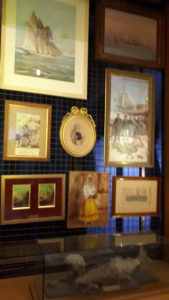

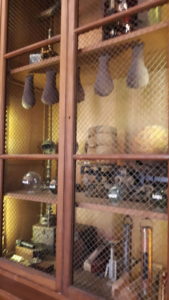

The visitor then goes through the large laboratory of the Hirondelle II (Swallow II), the last exploration boat of the Prince: the furniture, anti-roll tables, bottle holders and glass containers are all original! Many experiments were conducted there, among which the study of the venom of the physalie, the compressibility of seawater or the study of sediment. You would discover the balaclava divingsuit called “Seal”, developed by the Commandant Cousteau, in 1946, and even the first waterproof camera, named “Calypso Photo”, designed by the Belgian engineer De Wouters and Cousteau. The license was then purchased by the camera maker Nikon that renamed it “Nikonos”.

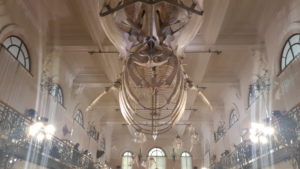
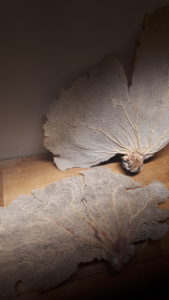
 This room adjoins the Whale Room, which includes skeletons of whales, which were not considered poaching. Eight interactive windows then take over. Time after time, they involve the visitor in the future of our blue Planet, through the main themes of this twentieth century: the condition of sea turtles, the areas marine protected, plastic pollution, change overfishing, or the high seas. This immense hall is staged thanks to the work of Xavier Perret on an original music by Clovis Schneider. All you have to do now is watch the show of sound and light that takes place every hour!
This room adjoins the Whale Room, which includes skeletons of whales, which were not considered poaching. Eight interactive windows then take over. Time after time, they involve the visitor in the future of our blue Planet, through the main themes of this twentieth century: the condition of sea turtles, the areas marine protected, plastic pollution, change overfishing, or the high seas. This immense hall is staged thanks to the work of Xavier Perret on an original music by Clovis Schneider. All you have to do now is watch the show of sound and light that takes place every hour!
The unmissable mascot of the Whale Room lies in the middle of the room, this impressive skeleton of whale 18 meters long for 2.8 tons, suspended several meters high. It was originally stranded in 1896 on the Ligurian coast in the Mediterranean Sea. Thirteen other skeletons, including one sperm whale of 8 meters totaling 163 bones will complete your marine panorama.
A new area has just open, The Odyssey of Marine Turtles, accessible since April 27, this brand new open-air development, of 550m2, raises awareness about the fate of these large migratory turtles, especially their daily lives but also their fragility. It includes a sensitization course but also a clinic for wounded turtles in the Mediterranean and a rehabilitation pool, the last step before release. With a modern, immersive and interactive scenography, this new space with vocation sensitize, convince and engage as many people as possible in order to protect oceans.


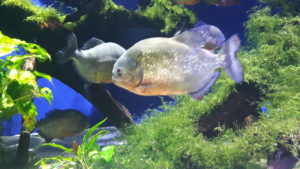


 This structure will complete the 90 basins and its collection, rich of 350 species of invertebrates, for more than 6,000 specimens, which delight the curious of the seabed, in those 6,000 m2 open to the public. The Shark Lagoon, reveals the diversity of the coral reef populated by a multitude of tropical fish and live corals. This giant aquarium of 6 meters deep, contains 450,000 liters of seawater, is protected from the pressure by 30cm sized windows. There coexists black tip sharks, a hawksbill, a white sharke, a nurse shark, moray eels and even a majestic giant guitarfish, all of them cohabiting with each other in nearly harmony… This amazing amount and variety of species make this Aquarium, one of the biggest and oldest in the world. Since 1903, even before the inauguration of the Temple of the Sea, many Mediterranean fishes and invertebrates were already visible in cement basins. It’s only from the early 1930s, that they were joined by tropical fishes, still in their natural environment faithfully restored.
This structure will complete the 90 basins and its collection, rich of 350 species of invertebrates, for more than 6,000 specimens, which delight the curious of the seabed, in those 6,000 m2 open to the public. The Shark Lagoon, reveals the diversity of the coral reef populated by a multitude of tropical fish and live corals. This giant aquarium of 6 meters deep, contains 450,000 liters of seawater, is protected from the pressure by 30cm sized windows. There coexists black tip sharks, a hawksbill, a white sharke, a nurse shark, moray eels and even a majestic giant guitarfish, all of them cohabiting with each other in nearly harmony… This amazing amount and variety of species make this Aquarium, one of the biggest and oldest in the world. Since 1903, even before the inauguration of the Temple of the Sea, many Mediterranean fishes and invertebrates were already visible in cement basins. It’s only from the early 1930s, that they were joined by tropical fishes, still in their natural environment faithfully restored.


As part of an international program that brings together public aquariums from all over the world, the Monaco Aquarium plays an important role in the conservation of endangered species: coral farm, reproduction of clown fish, seahorses, cuttlefishes or sea lions. apogon of the Banggai Islands threatened by overfishing.




It is thus part of the safeguarding and sustainable management of natural environments and species. Indeed, along the discovery of the fabulous hordes of colorful fins, many explanatory panels strew the alleys to make the visitor aware of the habitat places of those aquatic species as well as their state of preservation. For example, you would learn that some of them change of sex during their existence, also that the octopus instantly adopts the colors of its environment by mimicry or that the brown grouper, the sea cicada and the big mother-of-pearl are now protected species. We could only thank the big efforts made with lighting, and large photographs, reinforcing your sense of immersion in this marine world.

 The Museum presents an invaluable collection of art and craft items related to the ocean universe, and allows you to learn, wonder and discover the variety of the marine world. Some of them are even possible to purchase in the boutique, that contains many surprises in case you would like to bring a material souvenir back home, from your experience in this timeless Ocean Center.
The Museum presents an invaluable collection of art and craft items related to the ocean universe, and allows you to learn, wonder and discover the variety of the marine world. Some of them are even possible to purchase in the boutique, that contains many surprises in case you would like to bring a material souvenir back home, from your experience in this timeless Ocean Center.
Musée Océanographique de Monaco, Avenue St-Martin, MC 98000 Monaco.
Standard : + 377 93 15 36 00
Group reservations : + 377 93 15 36 40
Restaurant : + 377 93 15 36 16
Fax : + 377 93 50 52 97
Email : musee@oceano.org
The museum is open every day (except on the Grand Prix Formula 1 weekend and December 25th), on those opening hours:
January | February | March 10:00 to 18:00
April | May | June 10:00 to 19:00
July | August 09:30 to 20:00
September 10:00 to 19:00
October | November | December 10:00 to 18:00
Pets are not allowed inside the Museum, except for guide dogs.
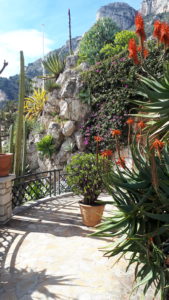
 At the top of the Principality hill, stands the Exotic Garden of Monaco, that has remained unique since its origins.
At the top of the Principality hill, stands the Exotic Garden of Monaco, that has remained unique since its origins.
Designed by the Monegasque engineer Louis Notari still on the wishes of the Prince Louis II, the garden was opened to the public in 1931 but officially inaugurated only in 1933.
The installation would then continue and the garden would be completed and conform to its current state, around 1938-1939 close to Monte Carlo.
It brings together in the open air, in a prestigious setting, a wide variety of so-called “succulent” plants (photo credits: Alex Plato).
Built on the side of a cliff, the Jardin Exotique offers breathtaking views of the Principality of Monaco and the French Riviera, proposes to discover succulent plants with extravagant forms whose cacti (or cactus) constitute the most representative family.





 The plants, acclimatized in this Garden, are originally from several distant dry areas (hence the term “exotic”): southwestern United States, Mexico, Central and South America for cacti and agaves from East and Arabian Peninsula, as well as South Africa for other succulents.
The plants, acclimatized in this Garden, are originally from several distant dry areas (hence the term “exotic”): southwestern United States, Mexico, Central and South America for cacti and agaves from East and Arabian Peninsula, as well as South Africa for other succulents.
You really feel like having a promenade in one of those semi-arid deserts composing some of those countries.
This observation can be constantly carried out thanks to the meticulous work of the Botanical Center, in front of the garden and its important plant heritage. Indeed, its greenhouses contain the most important collections of cacti and succulents in the world. A total of 10,500 plants are preserved, 85% of which are protected. The building, built on three levels, includes 900 m² of greenhouses and 1,000 m² of shelter but also 200 m² of premises for staff.

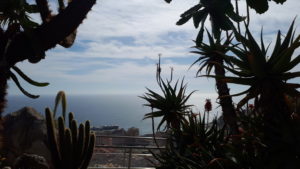



 Every knows that plants regularly produce flowers to reproduce, and you wouldn’t be surprised to admire many incredible specimen of their petals, spread in and around of this garden, landscaped all in altitude.
Every knows that plants regularly produce flowers to reproduce, and you wouldn’t be surprised to admire many incredible specimen of their petals, spread in and around of this garden, landscaped all in altitude.
These blooms are spread out all year long according to the place of origin of each species. Winter for Aloe and African Crassula, spring and summer for most of the Cacti.
Contrary to popular believes, only a small part of cacti blooms at night.
Although, many exotic species produce large, colorful, diurnal flowers.
In fact, with a surface of about 15,000 m², the Exotic Garden hosts more than a thousand of cacti and other succulent species (former called fatty plants), with stems or hypertrophied leaves storing water reserves, in order to resist to long heatwaves (photo credits: Alex Plato).





 Then discover the Observatory grotto, at the basis of the garden cliff opens a natural underground cavity in which the limestone rock, hollowed out by water since millennia ago, is dotted with caverns adorned with a wide variety of concretions: stalagmites, stalactites, draperies or columns.
Then discover the Observatory grotto, at the basis of the garden cliff opens a natural underground cavity in which the limestone rock, hollowed out by water since millennia ago, is dotted with caverns adorned with a wide variety of concretions: stalagmites, stalactites, draperies or columns.
Open to the public in 1950, the visit of the cave guided by specialists, takes place between altitudes from 98 m and 40m underground.
The cavity sinks practically up to the sea level, it is regularly covered by local speleologists, where traces of prehistoric human habitat have been found.
A Museum of Prehistoric Anthropology located in the garden, exposes many of these discoveries, like this huge mammoth skeleton and many prehistory era tools.

 The Exotic Garden of Monaco, 62 Boulevard du Jardin Exotique, 98000 Monaco (Tel: +377 93 15 29 80). Open all the year, except on November 19th (National Day) and December 25th.
The Exotic Garden of Monaco, 62 Boulevard du Jardin Exotique, 98000 Monaco (Tel: +377 93 15 29 80). Open all the year, except on November 19th (National Day) and December 25th.
– February to April and October: 9h – 18h
– May to September: 9h – 19h
– November to January: 9am – 5pm
Guided tours of the cave every hour from 10am, last visit one hour before the closing of the garden.
